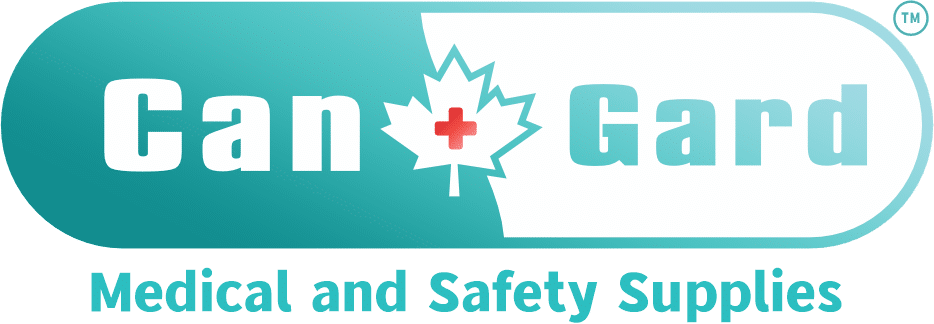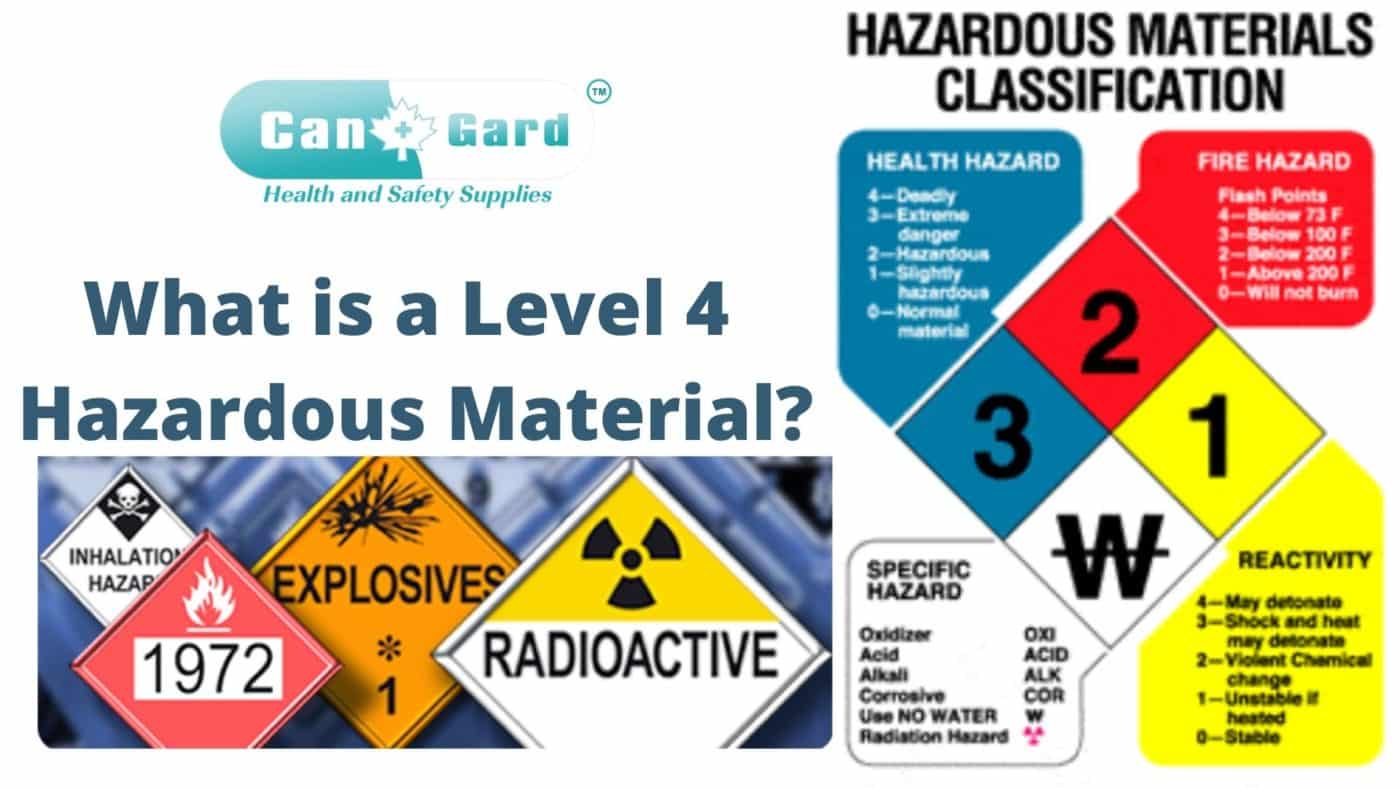CanGardCare, Signage & Safety Supplies
What is a Level 4 Hazardous Material?
Level 4 hazardous materials are chemicals that the EPA considers to be “extremely hazardous.” These chemicals have a low but non-zero risk of causing death or permanent injury from just one exposure. It is essential to keep these substances away from children and people who may not know what they are dealing with.
This blog post will tell you about level 4 hazardous materials and how to protect yourself from them!
1. There are six different types of hazardous materials
– Flammable liquids and gases. These substances could easily catch fire or create a dangerous reaction if they come into contact with other chemicals or objects, such as clothing, paper products, wood, etc.
– Oxidizers and Organic Peroxides. This is a substance like bleach which can cause corrosive damage to the skin
–Explosives. This is a substance that could be set off by a fire or other cause
–Poisons. This is any chemical that can harm the body if consumed, inhaled, absorbed through skin contact, etc.
–Radioactive materials. These are substances that emit radiation and can contaminate those around them with radioactivity over time, depending on how the amount of exposure.
–Toxic Substances. These hazardous materials are classified into three levels.
First Level: these are substances like arsenic or lead, which are not expected to cause harm at low levels of exposure
Second Level: substances that have the potential for causing systemic effects (e.g., lung damage) and may be fatal over time with repeated exposures
Third Level: These substances could cause death from a single dose, such as mercury or uranium.
2. Hazardous material levels range from 1 to 5, with level 1 being the least dangerous and level 6 being the most dangerous
Level 1: These are materials that are unlikely to cause harm when handled correctly and present no fire or explosion hazard
Levels 2: These materials can be easily ignited, such as gasoline; they also have a high risk of causing an explosion
Level 3-These substances could result in death with long-term exposure. They may not always release harmful vapors but will often require some form of ventilation.
Levels 4: These substances are corrosive or reactive and require extensive safety procedures to be appropriately handled. They could cause death within a matter of minutes or hours, such as hydrogen cyanide.
Level A- Acids that react with water or other materials without the addition of heat.
Level B- Alkalis react with water or other materials with the addition of heat.
Level C- Explosive substances that react violently when mixed
Level D- Substances that emit toxic vapors, such as hydrogen sulfide gas, when exposed to air.
Level F- Flammable liquids and solids that will ignite at a specific temperature without any external flame.
Level 5: These substances are corrosive or reactive and require careful attention to safety procedures. They could cause permanent injury or death in a matter of minutes, hours, days, weeks, or months, such as sulfuric acid.
Level 6: These substances are carcinogenic and toxic. They require careful attention to safety procedures, such as acrylamide.
3. Level 4 hazardous materials can be found in many products we use daily, including cosmetics and cleaning supplies.
Level 4 materials are regulated by the Department of Transportation and have special labeling requirements.
These products are common items such as ammonia, which can be found in many cleaning supplies.
4. The Environmental Protection Agency (EPA) regulates how these substances are produced, used, transported, stored, or disposed of to protect human health and the environment.
5. Examples of Level 4 hazardous materials include acrylamide (found in oven-baked foods), nitric acid (used in fertilizers), hydrochloric acid (used as a corrosive agent), sulfur dioxide gas (released by volcanoes)
6. For a substance to be classified as a Level 4 hazard, it must have an immediate or delayed adverse effect on humans or their environment when exposed at any dose.
How to Protect from Level 4 Hazardous Material?
– Wear protective equipment such as gloves and goggles when using or working with hazardous materials.
– Keep away from heat, sparks, open flames, electric motors, and machinery that may cause a fire.
– Store the substance in its original container out of direct sunlight and keep it locked up so children can’t access it.
– Label the products and containers with the appropriate hazard warnings.
– Destroy or dispose of all substances that are no longer needed through an approved agency, like a hazardous waste disposal facility.
– When disposing of any substance, contact your local government to find out about recycling or safe disposal locations in your area.
– Keep many different types of safety equipment on hand, such as goggles and gloves, so they can be used when necessary without having to search for them at a chaotic time.
– Respect the warning labels by taking cautionary steps when handling hazardous materials.”
*These items must not be mixed because this would create dangerous reactions involving combustion.* It is essential to know how these chemicals react with each other before mixing them. For example, hydrochloric acid, sulfuric acid, and nitric acid will react to create water vapor, sulfur trioxide gas, nitrogen dioxide gas.
Chemical reactions are reactions that occur when two or more substances combine chemically in an exothermic way (heat is released). In the example above, you can see this happening because it creates three gases and water vapor.
– It’s essential to be aware of all the hazards involved before handling hazardous material, whether they’re chemicals or radioactive materials. There is no such thing as “just a little bit,” so take precautions!
What Does a 4 Mean on the Hazmat Scale?
For HMIS I and II, a level of four means that the material is an oxidizer. This could be something like chlorine gas, nitrous oxide, or potassium chlorate.
A Level IV on the HMIS scale indicates that it needs to be handled as if it were radioactive, and any contact with water can lead to dangerous reactions, so gloves should always be worn when handling them!
Levels I-IV refer to DOT’s hazardous materials classifications.
The name for this classification system comes from Hazardous Materials Identification Signs which are used in workplaces where these chemicals may pose a hazard: “Danger” sign (Level III), “Warning” sign (Level II), “Caution” sign (level I) or “No Sign Required” meaning no danger present.

